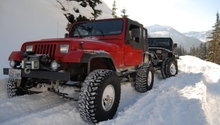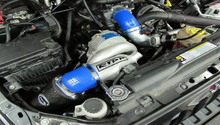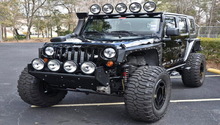Jeep Wrangler JK: Off-Road Modifications
Read on to get started in personalizing and improving your Wrangler's off-road prowess. Let's get out there.
This article applies to the Jeep Wrangler JK (2007-Present).
Lifts and diffs, as well as lockers and springs. Wrangler modding information could use up all the data storage on the world-wide-web; leaving none for cat videos. So to give the cats a break, here are the off-road modifications to best benefit the Wrangler's performance and safety:
- Larger tires
- Modified fenders
- Improved suspension flex
- Suspension lift
- Recovery attachment hard-points
A few definitions relating to Wrangler modifications:
- Sprung Weight: The frame and body of the Wrangler, and everything in it, that is riding on the suspension springs.
- Unsprung Weight: The parts of the Wrangler suspension that are not supported by the springs. This includes the drive shafts, axles, brakes, wheels and tires. Adding unsprung weight reduces the performance of any vehicle. As a general rule, adding one pound of unsprung weight has the performance effect of adding 10 lbs of load.
- Tire Size: The stock Wrangler size is 255/75/17. The tread width is 255mm. The sidewall height is 75% of the tread width, or 191mm. The bead diameter is 17" and fits on a 17" wheel. Yeah, millimeters, percentage and inches all in one size....it's the world we live in.
- Wheel Backspace: The distance from the hub mounting face of the wheel to the back of the rim.
- Wheel Offset: The distance from the hub mounting face of the wheel to its center-line.
Mod Your JK to Go Almost Anywhere
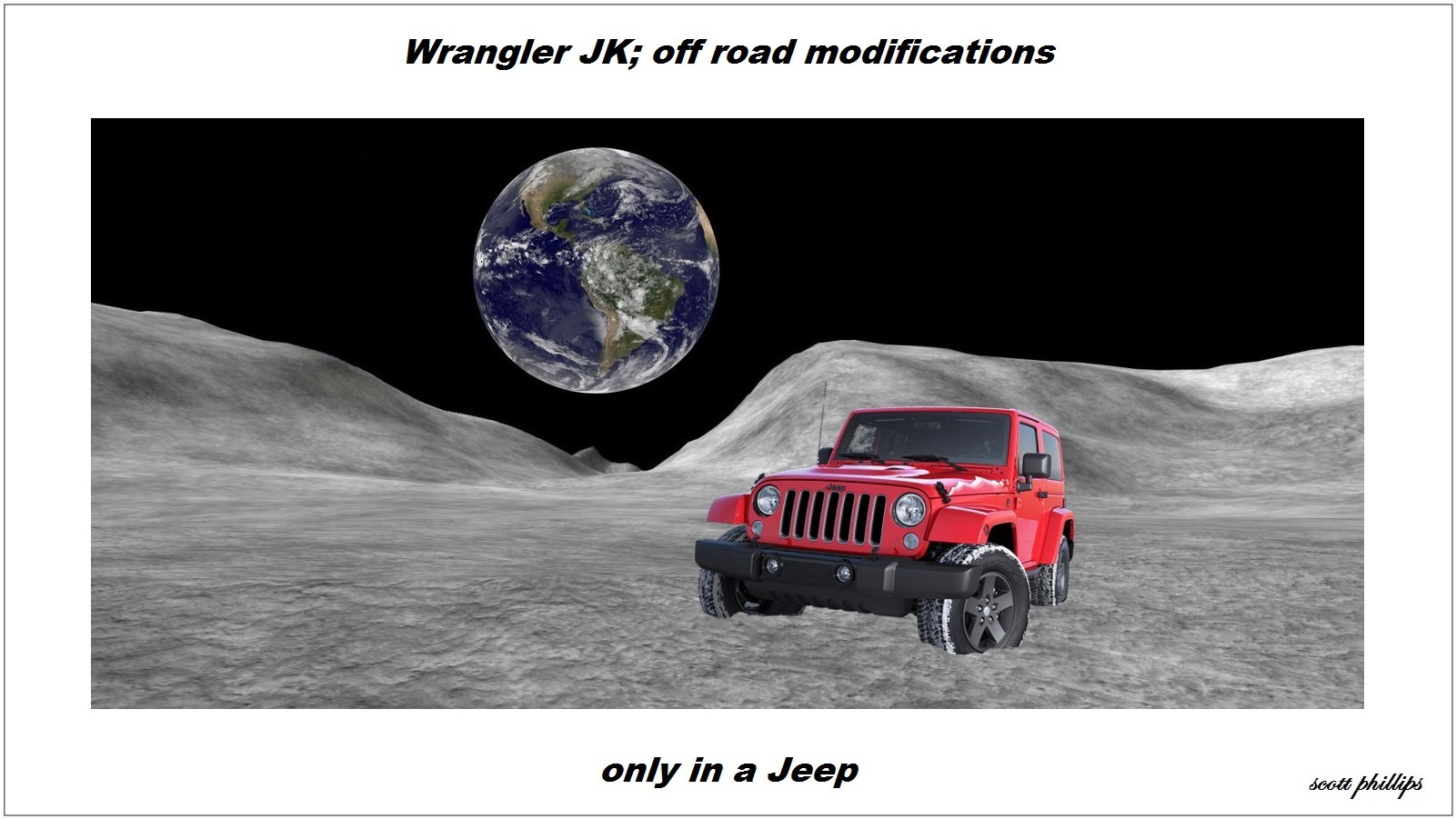
Pizza Cutter 33" Tires on Stock Wheels

DIY Cost – $880
Professional Cost – $980
Skill Level – Easy; direct bolt-on with no adjustments.
Larger tires improve off-road performance in two ways: they have a greater contact patch, which improves traction, and they raise the ground clearance of both the axles and the chassis. However, larger wheel/tire assemblies also increase unsprung weight and inertia; because the heavier assemblies are, the slower to respond to acceleration, deceleration and directional changes. In addition, the increased ground clearance raises the center of gravity, which makes the Wrangler less stable.
The Wrangler stock 17" wheel has a 255/75/17 tire, with a 10" tread width and 32" diameter. It can be upgraded to 255/80/17, increasing the tire diameter to 33" with the same tread width. This is the largest tire that can be installed on the stock suspension and is often called a "pizza cutter" because it looks tall and thin (and yes, that's a Starship Enterprise pizza cutter).
Unsprung Weight: The stock 17" wheel weighs 25 lbs and the 255/75/17 tire weighs 37 lbs. The 255/80/17 pizza cutter can increase the unsprung weight by 10+ lbs at each wheel.
Oversize Tires and Wheel Upgrades
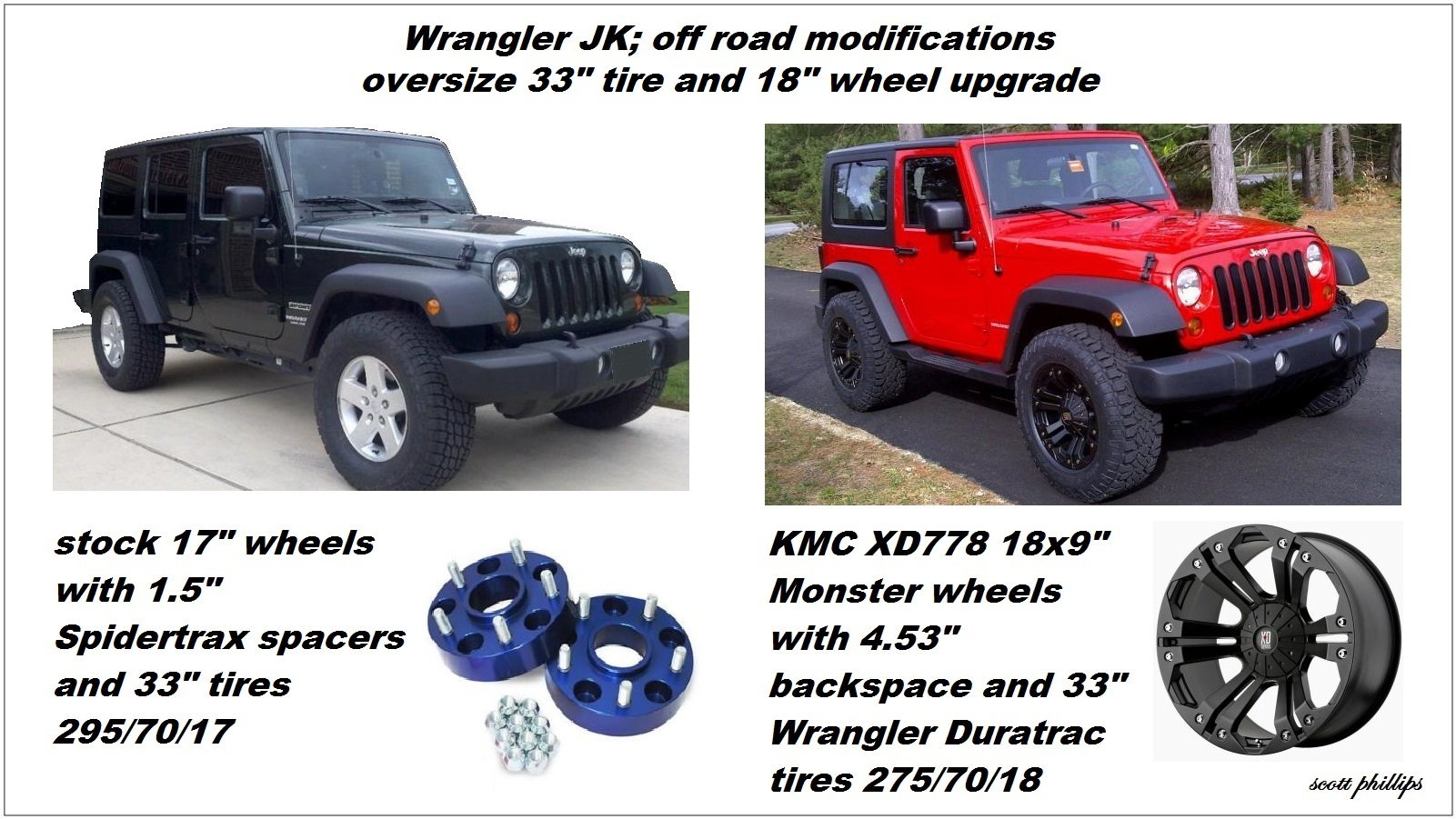
DIY Cost – Up to $1,880
Professional Cost – Up to $2,020
Skill Level – Easy; direct bolt-on, with minimal adjustments.
The stock 17" wheel can be further upgraded with a 295/70/17 tire that has an 11.6" tread width and 33.5" diameter. This will require 1.5" wheel spacers to move the wheel outboard enough to prevent rubbing during turning.
Choosing an aftermarket wheel allows you to upgrade to the 18" size with the correct backspacing, which provides a sturdier alternative to wheel spacers. The stock wheel backspace is 6.25", so the KMC XD778 with 4.5" backspace will move the wheel outboard 1.75", allowing room for the 275/70/18 Wrangler Duratrac tires shown.
Unsprung Weight: The KMC XD778 weighs 27 lbs and the Wrangler Duratrac weighs 55 lbs, increasing unsprung weight by 20 lbs at each wheel.
For a comprehensive review of portable, on-board air compressors, see the related article Portable Air Compressor Reviews.
Fender Cutouts or Fender Flares
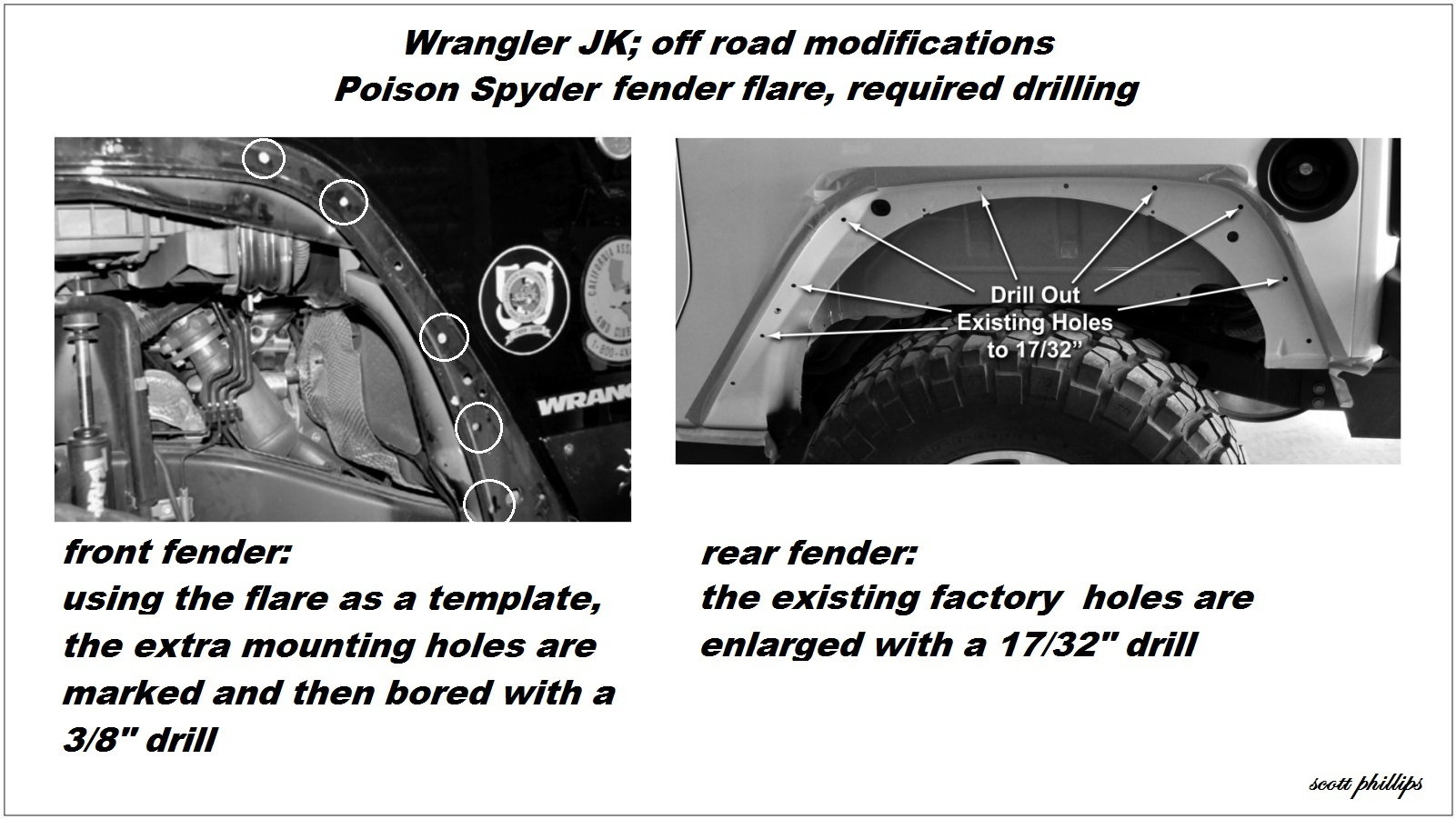
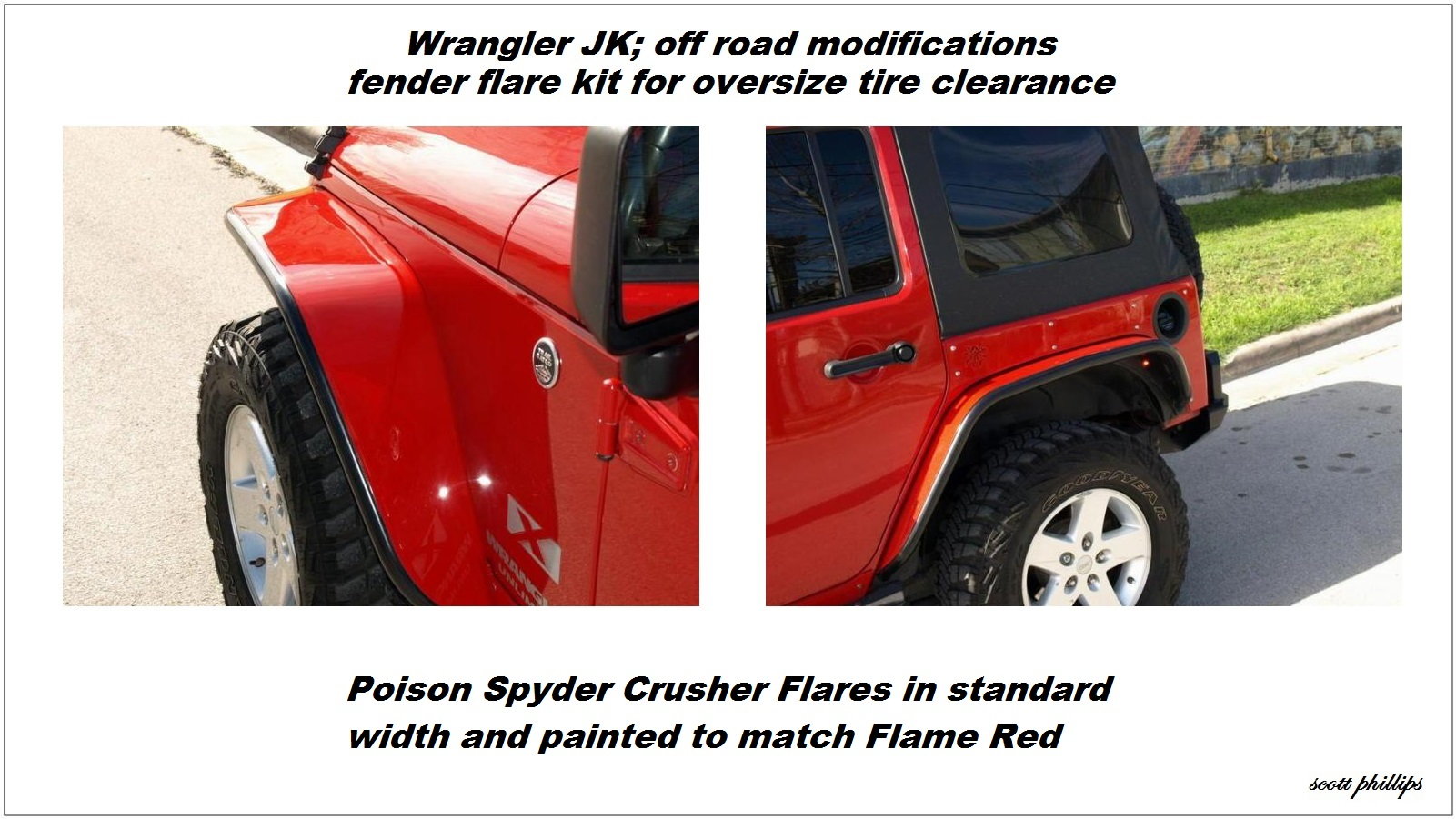
DIY Cost – $1,300
Professional Cost – $1,800
Skill Level – Easy to Moderate; no jacking is required and uses basic tools, but does require precise drilling.
During off-road wheeling, full suspension articulation can cause oversize tires to damage the stock fenders. The basic solution is to cut away the excess fender with a dremel tool. However, installing fender flares gives a much more finished, professional appearance.
Fender flares are available from many aftermarket suppliers in steel, aluminum and polymer and in narrow, standard and wide sizes. The Poison Spyder Crusher Flares shown here are a very highly regarded JK flare kit. Installation involves the removal of the stock fenders, carefully measuring and drilling, and then fastening the flares with stainless hardware.
The Poison Spyder Crusher Flares are available in steel or aluminum. The standard width front flare weighs 31.6 lbs in steel, and is extremely sturdy in the off-road environment. For lightweight applications, the standard width aluminum flare weighs only 11.8 lbs, but is less robust and requires more caution off-road. Both must be painted before installing.
(Related Article: The Ultimate Fender Guide - JK-Forum.com)
Anti-Roll Bar Quick Disconnects
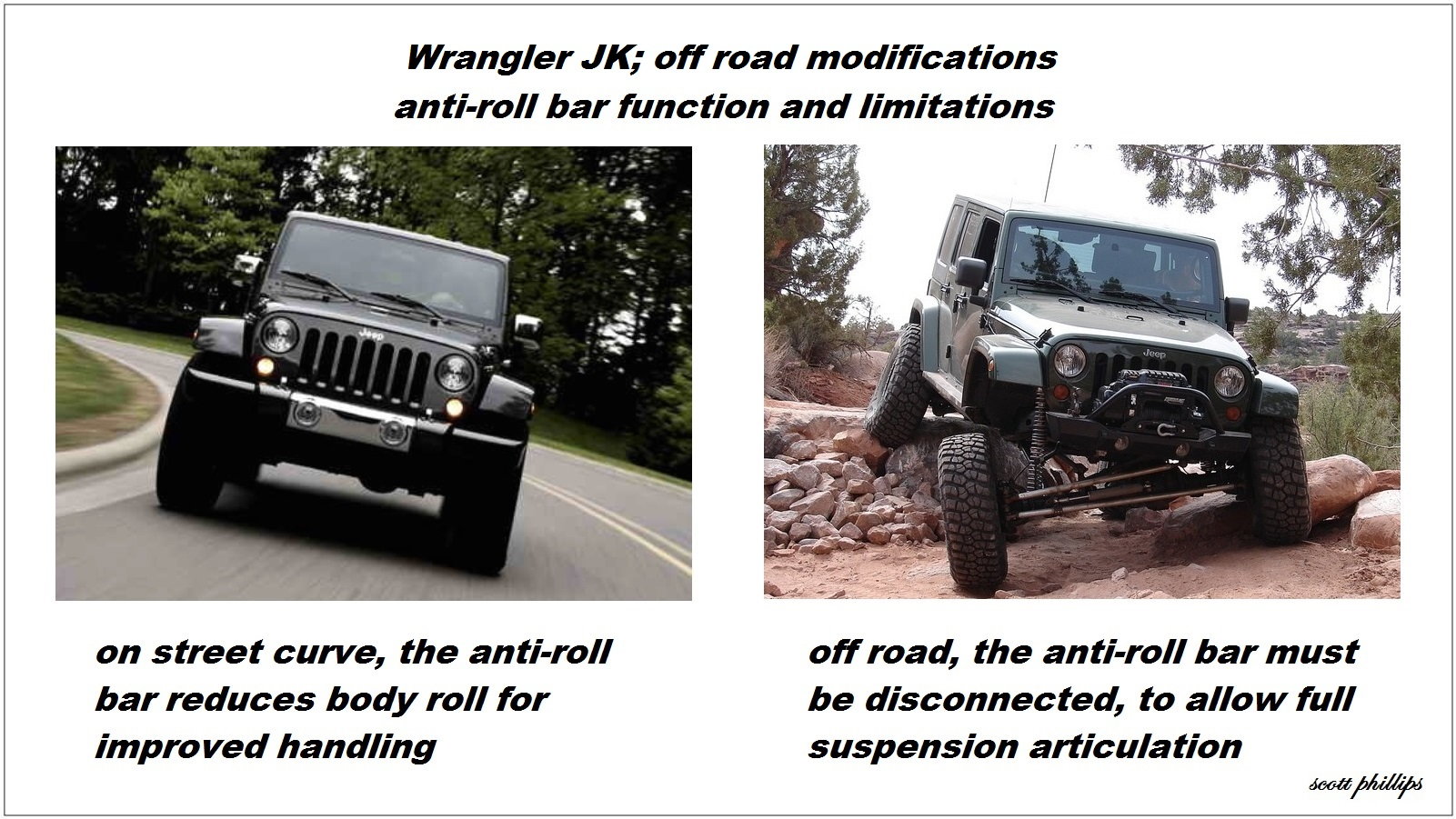
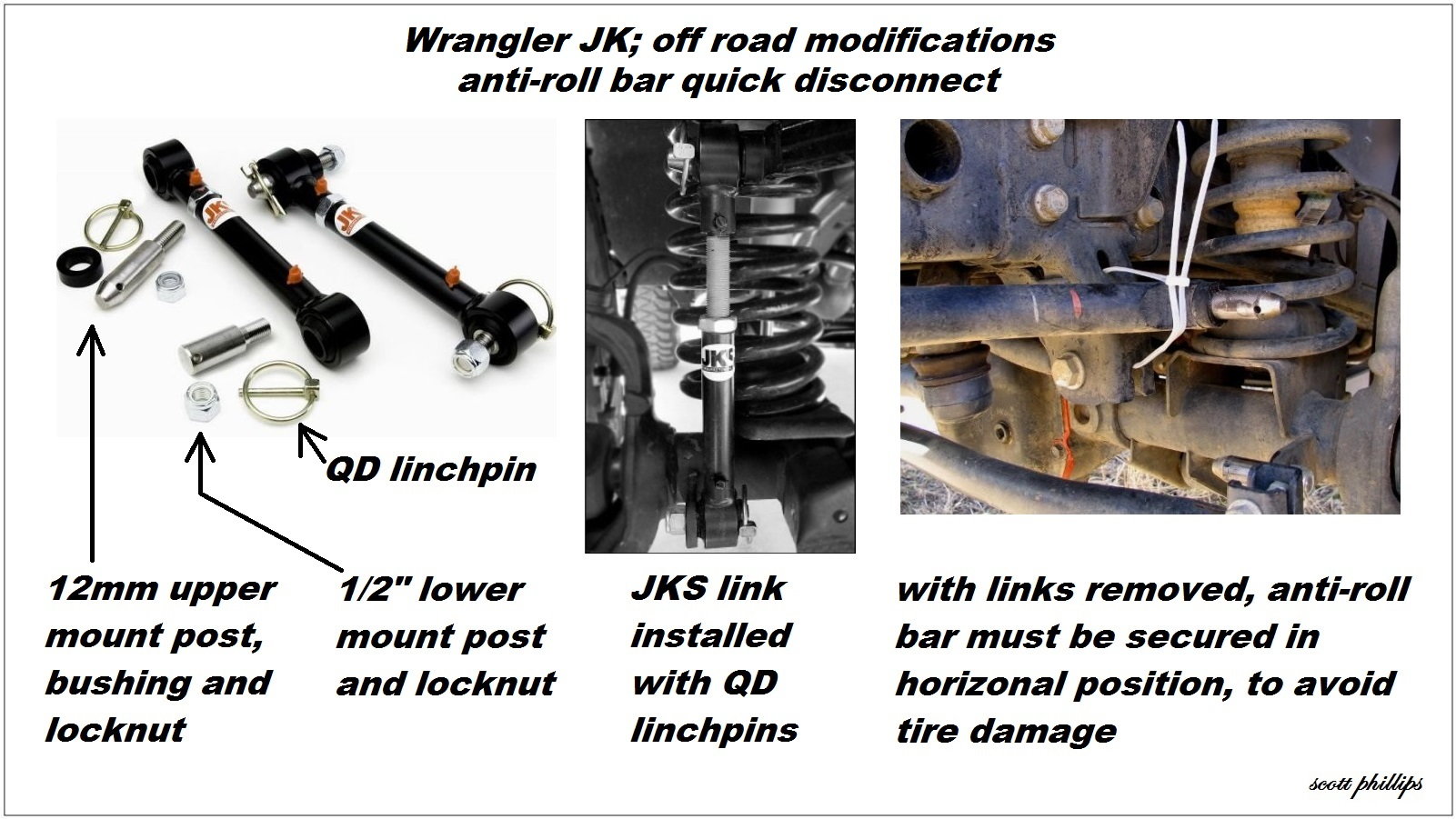
DIY Cost – $200
Professional Cost – $350
Skill Level – Moderate; may require precise drilling and cutting.
The anti-roll bar is commonly called a sway bar; although, its purpose is to minimize sway or body roll. The Wrangler JK has front and rear anti-roll bars. The bars connect the left and right wheels together through the frame, in an effort to force each side to remain level with the other side. On pavement, this minimizes body roll in curves and provides more handling stability. However, the anti-roll bar prevents the suspension articulation needed to keep all four wheels on the ground when off-roading.
The Wrangler Rubicon has a standard electronic sway bar disconnect, but on other models the anti-roll bar end-links must be manually disconnected. Some off-roaders will remove the 12mm bolts in the end-links and replace them with smaller 7/16" clevis pins that can be quickly pulled on the trail. These clevis pins must be monitored closely because they rattle inside the end-link bushings and break. However, there are many great aftermarket kits, such as the JKS Quick Disconnect Link kit shown here.
To prevent tire damage, always zip-tie or bungee the disconnected anti-roll bar in the horizontal position. Do not disconnect the rear anti-roll bar, as it has more flexibility and aids in stabilizing the Wrangler in extreme articulation, as well as protecting the rear brake hoses from over-extension.
Suspension Lift Kits
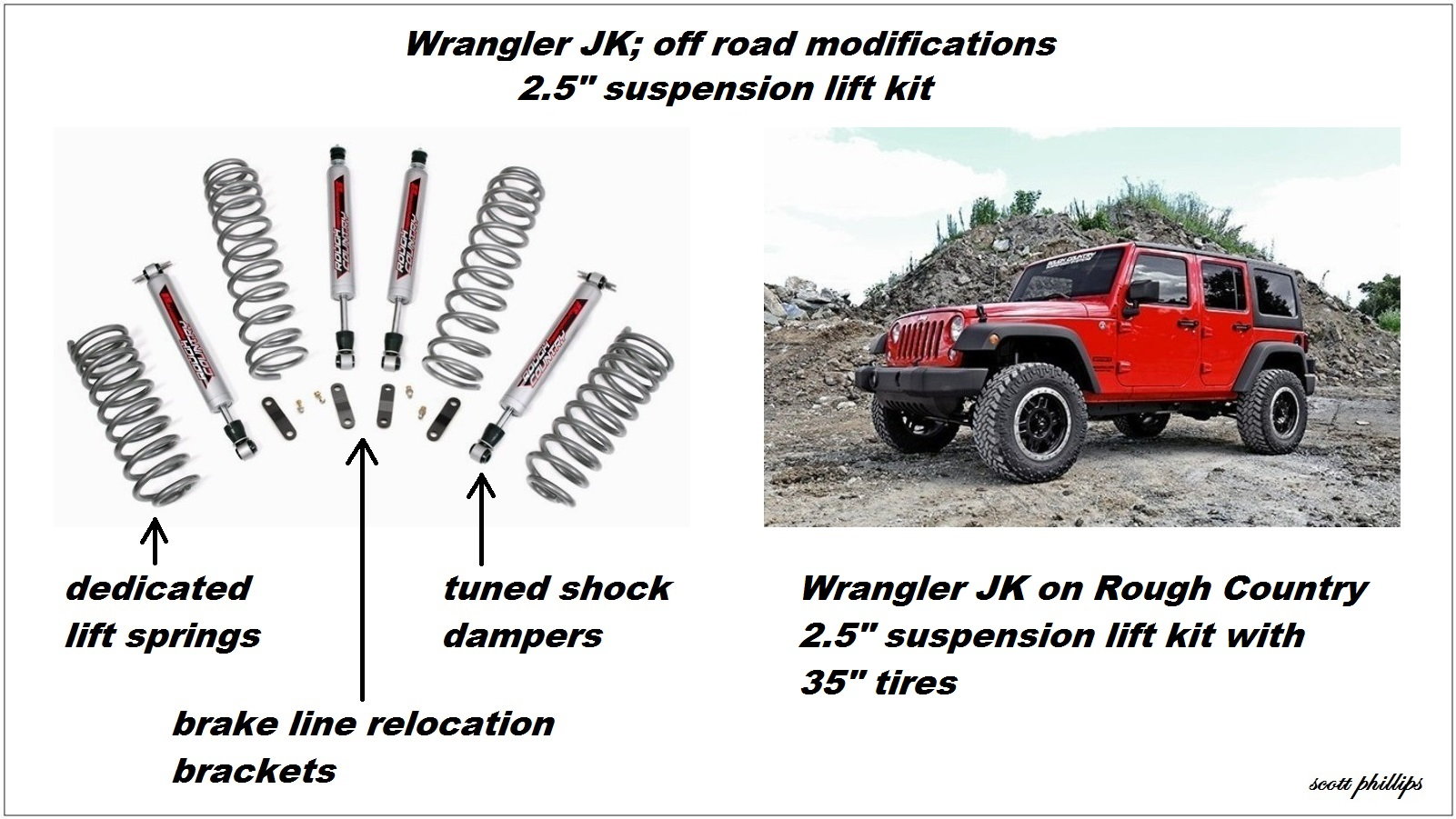
DIY Cost – $350
Professional Cost – $700
Skill Level – Moderate; jacking is required, and an assistant may be needed.
Suspension lift kits increase the ground clearance of the chassis, at the expense of raising the center of gravity. The Wrangler JK can be lifted a maximum of 2.5"—allowing up to 35" tires—without significantly affecting the drive-train and suspension geometry. The economy lift kits simply raise the chassis with 2.5" spacers on the stock springs and 2.5" extension brackets on the stock shock dampers. However, the medium-priced Rough Country kit shown here, uses dedicated springs and tuned shock dampers for a fully integrated suspension system. Installation involves jacking the Wrangler and placing it on jack stands, replacing the springs and shock dampers and relocating the brake line mounts and rear track bar mount.
Pro Tip
Upgrading tire diameter to 35" or 37" reduces tire revolutions and increases unsprung weight to the point that gearing changes are needed to restore engine performance.
Front Base Plates with Hitch Receivers

DIY Cost – $300-500
Professional Cost – $500-800
Skill Level – Moderate; requires minor drilling and bolting the base plates onto the front crash structure.
Recovery is the snatch-pulling of an immobile Wrangler out of the sand or muck and requires a nylon elastic recovery strap, which acts as a shock absorber for the abrupt pulling force. The only safe heavy duty recovery fixture is a frame-mounted hitch receiver, equipped with a D-ring adapter. The Roadmaster base plate kit shown bolts securely to the front frame and provides dual 2" hitch receivers for aggressive recovery pulling.
D-Ring Hitch Adapters for Recovery
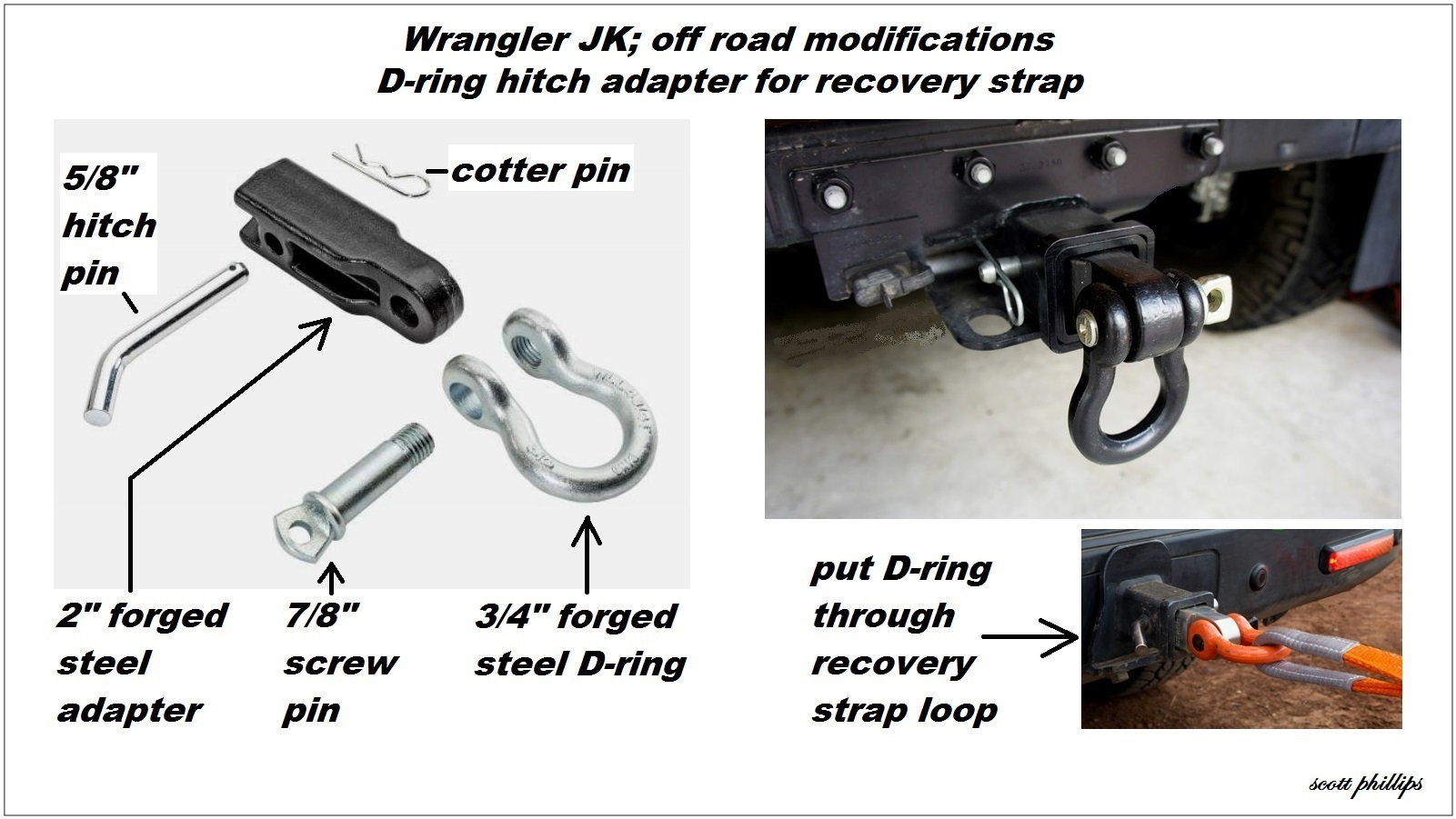
DIY Cost – $30-100
Professional Cost – $80-200
Skill Level – Easy; can be accomplished with hand tools.
Most sanctioned trail rides prohibit tow straps with metal hooks, which can become dangerous missiles. Additionally, the stock front "bulldog teeth" bumper hooks are only meant for light pulling. Safe recovery is conducted with nylon loop recovery straps attached to D-ring hitch adapters as shown.
For more information on recovery straps see the related article Off-Roading 101 Guide.
Related Discussions
- How to Perform After Off Roading Maintenance - JK-Forum.com
- JK Upgrades - JK-Forum.com
- Thoughts on Lifts - JK-Forum.com
- Post Lift Kit Pics - JK-Forum.com


